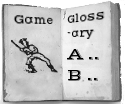Massachusetts Game
| Game | Massachusetts Game |
|---|---|
| Game Family | Baseball |
| Location | New England, WNY, Upper Midwest |
| Regions | US |
| Eras | 1800s, Predecessor |
| Invented | No |
| Tags | |
| Description | This is the game played according to rules that were codified in May 1858 in Dedham Massachusetts. It featured short basepaths, an absence of foul ground, plugging of runners, a smaller and softer and lighter ball, wooden stakes in place of sascks as bases,winners definied as the first team to reach 100 “tallies,” and a one-out-side-out rule. It remains unclear how close these rules -- written 13 years after the Knickerbocker rules were codified -- were to round ball, goal ball, and/or base games played in MA for the previous 50-75 years. The Massachusetts Game declined fairly rapidly after 1860. |
| Sources | The Mass game rules appeared in Mayhew and Baker, Base Ball. A For a more modern treatment, see John Thorn's Our Game blog at https://ourgame.mlblogs.com/the-game-that-got-away-a385699cd936 |
| Source Image | [[Image:|left|thumb]] |
| Comment | See the article on the Massachusetts game in the Origins Committee Newsletter, September, 2021. See also Lovett, Old Boston Boys p. 129-132 for the style of play. He says that the bat used was flat and short. Edit with form to add a comment |
| Query | Edit with form to add a query |
| Has Supplemental Text |
Related Essays
Comments
<comments voting="Plus" />
